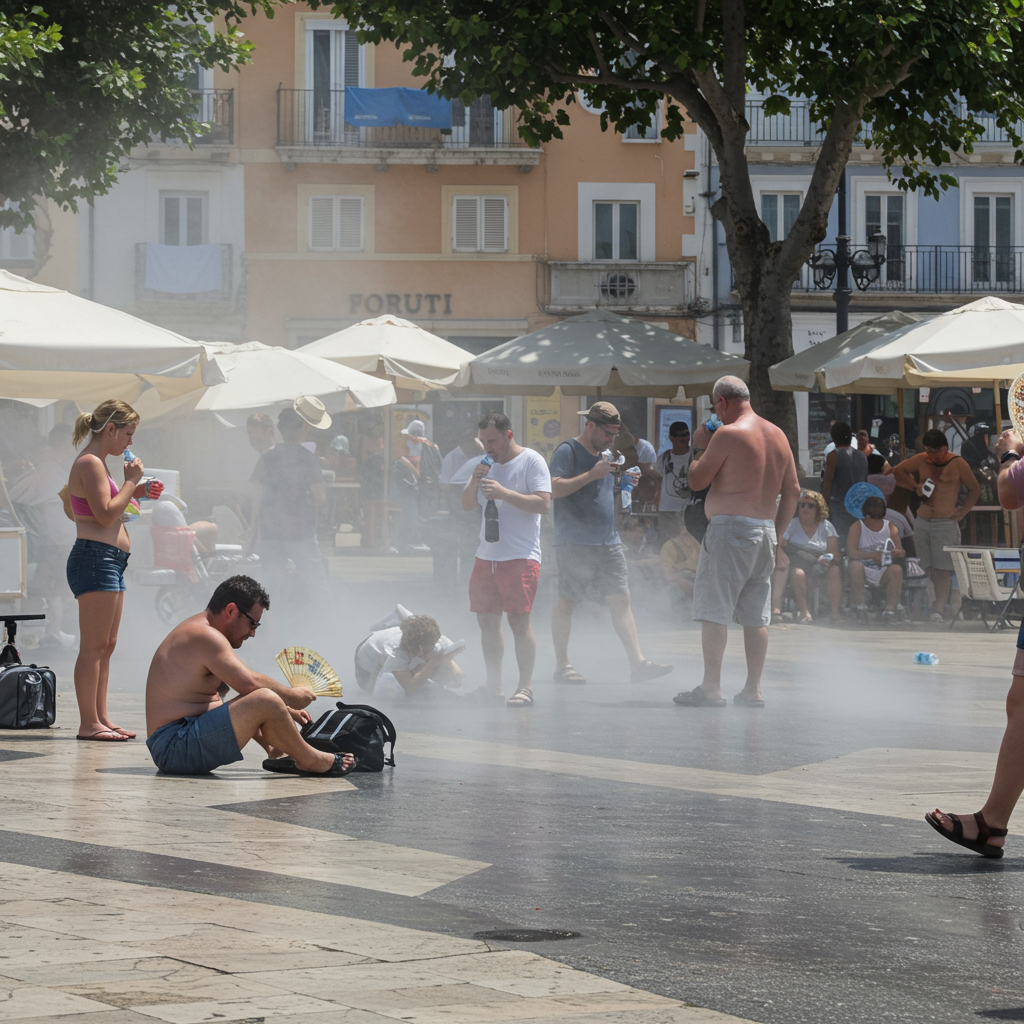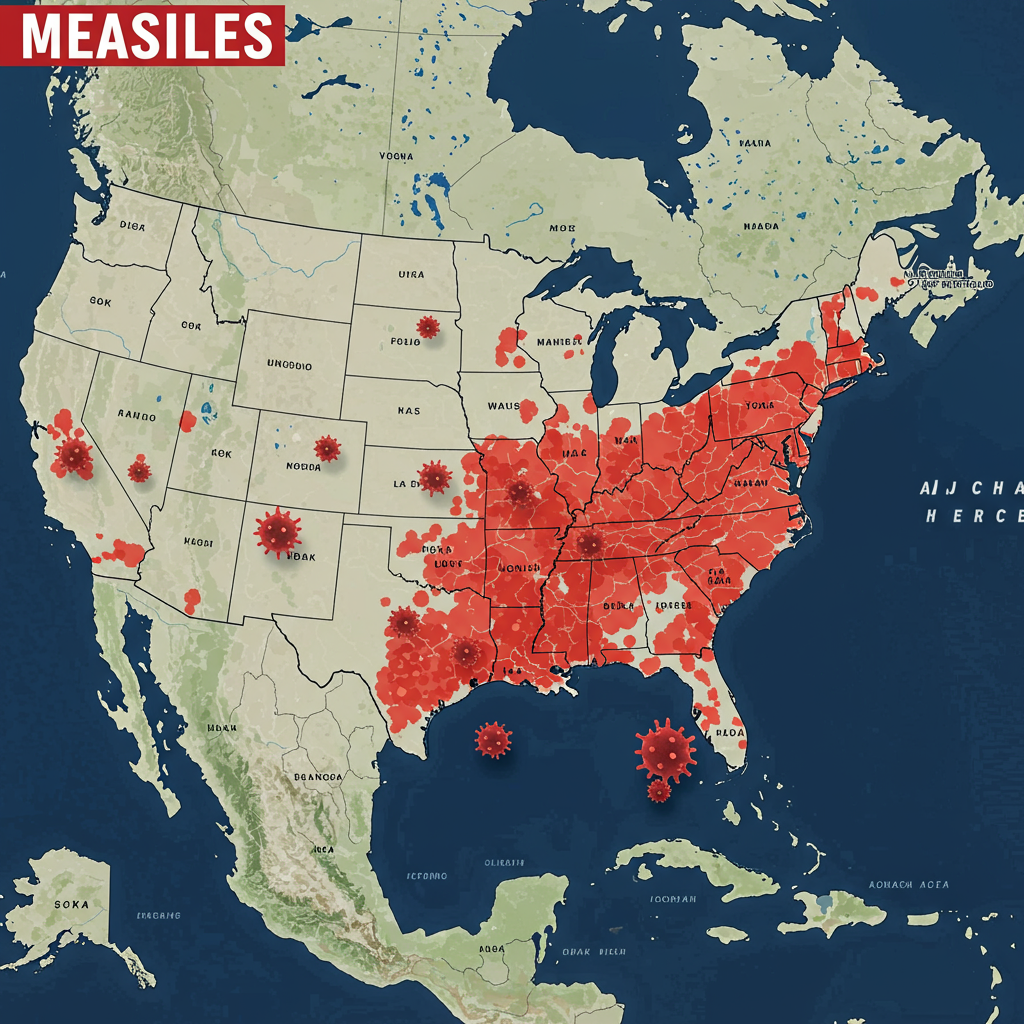A punishing wave of extreme heat is currently gripping large parts of Europe, pushing temperatures into dangerous territory and shattering records across multiple nations. This intense heatwave, described by some as the “new normal” in a changing climate, shows few signs of immediate relief in affected areas, prompting urgent warnings and significant disruption to daily life for residents, tourists, and workers alike. From the Iberian Peninsula across to Turkey, authorities are activating emergency measures as the continent endures the relentless sun and stifling conditions.
Unprecedented Heat Grips the Continent
This isn’t merely warm summer weather; reports confirm temperatures soaring well past 37.8 degrees Celsius (100 degrees Fahrenheit) in numerous locations across southern Europe. The heat is fueled by a vast heat dome positioned over the region, directing blistering air across a wide arc of the continent. Forecasts indicate that conditions could worsen before any relief arrives, with temperatures potentially climbing even higher in the coming days, nearing their peak around midweek in some spots. This widespread event is impacting millions, forcing significant changes to routines and presenting serious health challenges.
Country-Specific Impacts and Responses
The effects of this severe heatwave are being felt differently across European nations, leading to varied responses from local and national authorities.
In Spain and Portugal, the situation is particularly critical. Portugal issued red heat warnings for seven of its 18 districts, with temperatures forecast to reach 43°C (109°F). This followed a suspected record-breaking June temperature of 46.6°C (115.9°F) the previous day. Spain recorded a June high of 46°C (114°F) in Huelva province, and its first heat wave of the year is not expected to abate until at least Thursday. The capital of Andalusia, Seville, anticipated hitting 42°C (nearly 108°F).
Italy has placed a staggering 21 cities under a “red” alert by the Health Ministry. This signifies emergency conditions posing potential negative effects even on healthy, active individuals, in addition to vulnerable populations. Regional governments in Liguria and Sicily implemented restrictions on outdoor work, such as construction and agriculture, during the hottest hours of the day. Paradoxically, while the south swelters, parts of northern Italy near Turin experienced torrential rains and flooding, highlighting the volatile nature of current weather patterns.
France, still mindful of the devastating 2003 heat wave, is prioritizing the protection of vulnerable populations, including the homeless and the elderly. Authorities are focusing on providing support and setting up cooling measures like misting stations along waterways such as the River Seine in Paris. The intense heat and accompanying high winds contributed to the outbreak of the first significant forest fires of the season in the southern Aude region, consuming hundreds of hectares and requiring extensive firefighting efforts, including water-dumping planes and the evacuation of a campground.
In Turkey, similar scenes of wildfires fanned by high winds led to damage and disruptions. Blazes near Izmir forced the temporary closure of the local airport and required the evacuation of four villages. Another fire near the Syrian border also resulted in significant evacuations, underscoring the environmental toll of the prolonged hot and dry conditions.
Further north, even typically milder climates are feeling the heat. Germany is bracing for scorching temperatures in the south, with forecasts reaching up to 39°C (102°F) by midweek. This has led some towns to impose limits on drawing water from rivers and lakes to conserve resources. Zoos are also taking special measures to keep animals cool, such as showering elephants and providing ice blocks to bears. The United Kingdom saw Wimbledon facing what was anticipated to be its hottest start on record, with tournament rules allowing players heat breaks under certain temperature thresholds.
More Than Just Discomfort: Public Health Risks
The primary concern during such extreme heat events is the significant risk posed to human health. High temperatures silently threaten those most in need of protection: older adults, young children, outdoor workers, and anyone managing chronic health conditions. Dr. Hans Kluge, head of the WHO’s Europe office, specifically warned about these vulnerable groups.
Symptoms of heat exhaustion, including heavy sweating, weakness, dizziness, nausea, and a fast, weak pulse, are common dangers. If left untreated, this can escalate to heatstroke, a medical emergency characterized by a high body temperature (above 40°C or 104°F), confusion, hot dry skin (or heavy sweating), and a rapid, strong pulse. Heatstroke requires immediate medical attention and can be fatal. The risk is amplified in areas where air conditioning is not widely available or used, whether due to cost, environmental concerns, or cultural beliefs. Governments and local municipalities are dispatching workers to check on vulnerable residents, particularly the elderly, who may be isolated or unable to cope with the heat independently.
Strain on Infrastructure and Environment
Beyond human health, the relentless heat is placing significant strain on infrastructure and the natural environment. The most striking example is the shutdown of a nuclear reactor in southern France. The decision was made because discharging its heated cooling water into an already-overheated river would have endangered aquatic wildlife, demonstrating the ripple effect of extreme temperatures on critical systems and ecosystems.
Water resources are under pressure, leading to restrictions on usage in some areas, as seen in Germany. The combination of high temperatures, dry conditions, and strong winds creates a volatile environment for wildfires. The blazes reported in France and Turkey highlight how quickly fires can ignite and spread, threatening homes, natural landscapes, and even critical infrastructure like airports.
Is This the New Normal? Climate Change Connection
This severe heatwave is not an isolated event. UN Secretary-General António Guterres, speaking from Seville, Spain, stated unequivocally that “Extreme heat is no longer a rare event — it has become the new normal.” He directly linked the current conditions to climate change, emphasizing that “The planet is getting hotter and more dangerous — no country is immune.” This perspective underscores the view among experts that such intense and prolonged heat events are becoming more frequent and severe as a direct consequence of global warming. The heatwave serves as a stark reminder of the urgent need for action to mitigate climate change and adapt to its already visible impacts.
Staying Safe: Practical Advice for Residents and Tourists
Navigating a heatwave requires vigilance and proactive measures. For those in affected areas, staying safe is paramount.
Here are essential tips:
Stay Hydrated: Drink plenty of water, even if you don’t feel thirsty. Avoid excessive caffeine or alcohol, which can contribute to dehydration.
Seek Cool Environments: Spend as much time as possible in air-conditioned buildings or shaded areas. Public cooling centers, libraries, or shopping malls can offer respite.
Limit Outdoor Activity: Avoid strenuous outdoor work or exercise during the hottest parts of the day, typically between 10 a.m. and 4 p.m. If you must be outside, take frequent breaks in the shade and stay hydrated.
Dress Appropriately: Wear lightweight, loose-fitting clothing in light colors. A wide-brimmed hat and sunglasses can protect from the sun.
Check on Others: Regularly check on elderly relatives, neighbors, and friends, especially those who live alone or have pre-existing health conditions. Ensure they have access to cooling and hydration.
Recognize Symptoms: Be aware of the signs of heat exhaustion and heatstroke in yourself and others. Seek medical help immediately if symptoms of heatstroke appear.
Cool Down: Take cool showers or baths. Apply cool, wet cloths to your skin.
Manage Homes: Close blinds or curtains during the day to block sunlight. Open windows at night if temperatures drop sufficiently.
Even tourists determined to see the sights are altering plans, seeking refuge in shaded cafes or, in Rome, wilting even with misting fans. Some sought cooler temperatures inside ancient stone structures, which didn’t always provide adequate relief, highlighting the challenge of escaping the heat in urban environments not built for such extremes.
Frequently Asked Questions
What are the main health risks associated with the current Europe heatwave?
The primary health risks during this extreme heat event include heat exhaustion and potentially life-threatening heatstroke. These conditions are particularly dangerous for vulnerable groups like older adults, young children, outdoor workers, and individuals with chronic health conditions, as highlighted by the World Health Organization. Symptoms range from dizziness and nausea to confusion and high body temperature, requiring prompt medical attention.
Which European countries are most significantly affected by the ongoing heatwave?
The heatwave is impacting a wide range of European countries, extending from the Iberian Peninsula eastward. Reports specify severe conditions and warnings issued in Spain, Portugal, Italy, France, Turkey, Germany, and the United Kingdom, among others. Italy has placed 21 cities under a “red” health alert, while Spain and Portugal have seen particularly high, potentially record-breaking temperatures and widespread warnings.
What precautions should people take to stay safe during the extreme heat in Europe?
To stay safe during the Europe heatwave, it is crucial to remain hydrated by drinking plenty of water and avoiding dehydrating beverages. Seek cool, shaded, or air-conditioned environments whenever possible and limit strenuous outdoor activities during the hottest parts of the day. Wear light, loose clothing, take cool showers, and check on vulnerable individuals who may need assistance coping with the heat. Recognizing symptoms of heat illness is also vital for prompt action.
Conclusion
The intense heatwave gripping much of Europe is a significant event, bringing record or near-record temperatures and posing serious risks to health, infrastructure, and the environment. As parts of the continent brace for the heat to potentially intensify before any widespread relief arrives, the focus remains on public safety and mitigating the impacts. This event serves as a powerful reminder of the growing reality of extreme weather events and the imperative to address climate change while adapting to the challenging conditions it creates. The coming days will be critical for millions as they navigate this dangerous period of heat.
Word Count Check: ~1150 words




